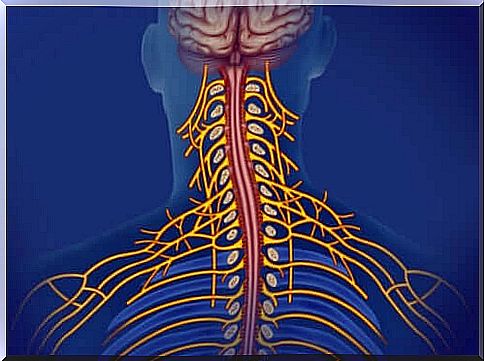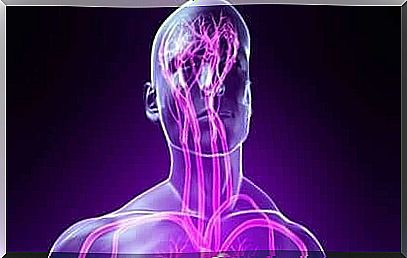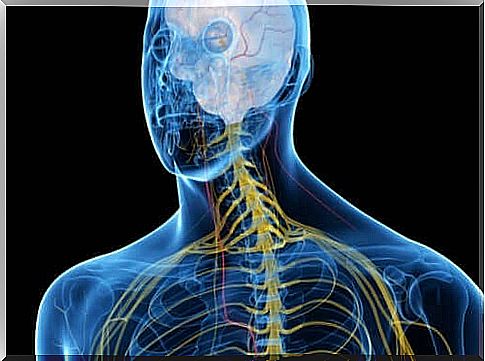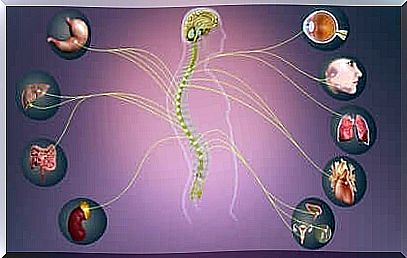The Somatic Nervous System: Characteristics And Functioning

The essential function of our nervous system is communication. Experts divide this system into two parts, the somatic nervous system (SNS) and the vegetative (or autonomic) nervous system (VNS).
The somatic nervous system is also a complex system. It forms the part of the nervous system that forwards sensory information to the central nervous system (CNS). In other words, the somatic nervous system is responsible for communication between the body and the outside world. The autonomic nervous system, on the other hand, is responsible for communication between the individual organs. It is through this mechanism that the body maintains homeostasis.
In addition, the SNS also controls the skeletal muscles, more precisely, voluntary and voluntary movements. This system perceives changes through its receptors. Therefore, the motor fibers in the somatic nervous system have some properties that differ from those of the autonomic nervous system:
- First, this system has no ganglia.
- Second, the neural segments are located in the central nervous system. In addition, they transmit the information directly to the effector (in the skeletal muscles) without interruption.
- In addition, the transmission speed is much higher.
The somatic nervous system may or may not stimulate the effector, but it does not inhibit it.

The somatic nervous system consists of different sensory pathways
In order for you to be able to perceive a sensation, the corresponding information must arrive in the cerebral cortex. The nerve pathway is the path on which the information travels through bundled neurons that connect the peripheral nervous system to the central nervous system.
In order for a sensory stimulus to reach its destination, the central nervous system, it has to get from the receptors to the central nervous system. It does this through a connection with three neurons. In addition, the sensitivities of different parts of the body are proportionally mapped in the somatosensory cortex. Not all areas are the same size, body parts such as fingertips and the lips take up a very large area.
In addition, there are different types of sensory pathways. Depending on the modality of the senses they control, they are divided into the following groups:
- Pathways for fine perception – discriminative or epicritical sensitivity
- Pathways for gross perception – gross or protopathic sensitivity
- The pathways for pain and temperature perception
- Proprioceptive Pathways – Posture

Differentiation of nerve tracts according to the origin of the stimuli
In addition, nerve tracts can be divided according to the origin of the stimuli:
- Exteroceptive pathways: carry information coming from the skin.
- Interoceptive pathways: transfer information from the internal organs.
- Proprioceptive pathways: These pathways process information that comes from the musculoskeletal system.
In addition, the nerve impulses pass through three neural relays to relay a sensation:
- First-order neurons: They transmit information from the surface of the body.
- Second order neurons: They are located in the posterior horn of the spinal cord or in the trunk. They are responsible for transmitting the nerve impulse from the trunk to the thalamus. This is where the neuronal connection (synapse) with the third-order neurons is created.
- Third order neurons: These neurons are relay neurons of the thalamus. Their task is to direct the nerve impulse to the somatosensory areas of the brain area, which is located behind Ronaldo’s cleft in the parietal lobe.
Before the information reaches the cortex, where the sensation is then interpreted, the thalamus processes all sensory information (with the exception of olfactory information). After that, they are grouped together in the parietal cortex, where sensations are usually processed.
Motor pathways
When you reach out your hand to pick something up with it, this mental process involves both contraction and relaxation of your muscles. These processes take place in both your hand and arm muscles.
In addition, motor pathways are involved in these movements. They conduct nerve impulses from the central nervous system to the skeletal muscles (somatic effectors). The body uses motor neurons located in the anterior horn of the spinal cord for this transmission of stimuli.

Experts divide the motor system into three groups, depending on the starting and ending point of the nerves:
- Corticonuclear nerve pathways: These pathways run to the motor neurons of the cranial nerves. Your facial muscles are also controlled via these pathways.
- Juxta-pyramidal nerve tracts: The starting point for these nerves is area 4 of the frontal fold. Your goal is the bulbar reticular formation.
- The pyramidal or corticospinal tract: connects the cortex to the neurons of the anterior horn in the spinal cord. This connection controls the muscles of the trunk, neck and extremities.
Hence the somatic nervous system is a very complex system. In order to control movement from the central nervous system, some connections need to be made. Even if someone touches you or you touch an object, numerous neurons and areas of the brain have to work together to transmit and process these stimuli.









